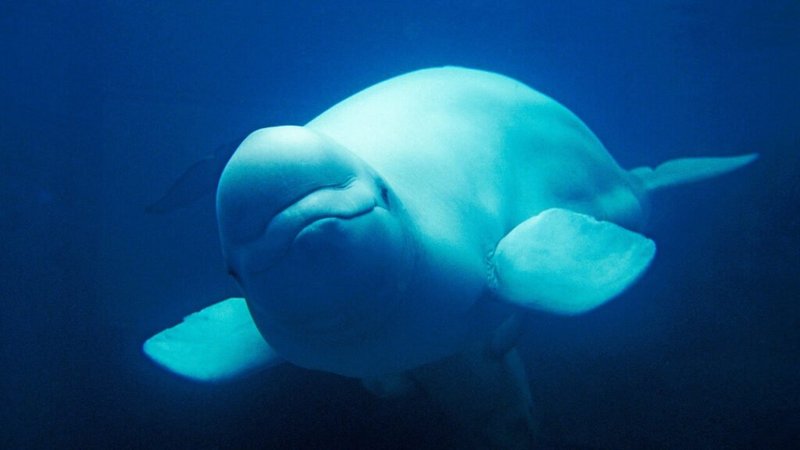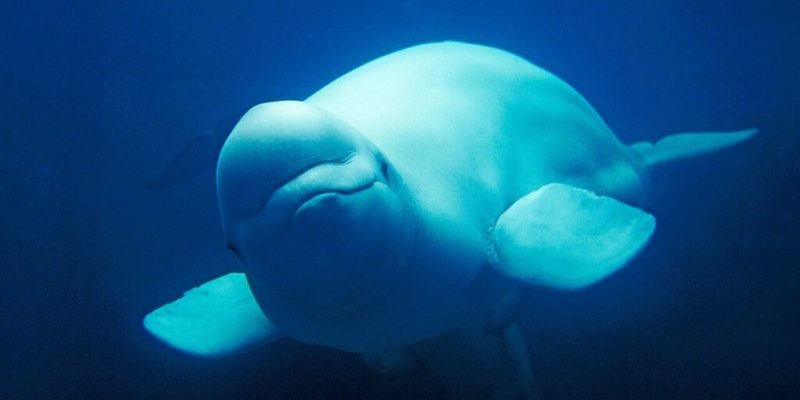
When thinking about where beluga whales are found, it’s important to recognize their adaptability. They thrive in cold Arctic and sub-Arctic regions, yet some populations swim into rivers during the warmer months. This blending of environments is one of the many reasons these whales are so fascinating. So, let’s dive deeper into their habitats, from the frigid ocean depths to the flowing rivers.
Beluga Whales in the Arctic Ocean
The Arctic Ocean is the primary home of beluga whales. Picture a vast expanse of icy waters, dotted with ice floes where these whales can often be spotted. This ocean is rich in nutrients, making it an ideal feeding ground. Belugas primarily hunt fish and invertebrates, like shrimp. The abundance of these food sources makes their stay in the Arctic invaluable.
Moreover, beluga whales are known for their unique social structures. They often travel in small pods that can range from just a couple of whales to larger groups of up to 50 or more. You might be wondering why they prefer the Arctic over warmer waters. The answer lies in their need for colder temperatures, which help regulate their body heat. Though they can tolerate some warmth, the icy waters provide a more natural environment.
Beluga Habitats in Sub-Arctic Regions
In addition to the Arctic, beluga whales are also found in sub-Arctic regions, where the waters are still chilly but not as extreme. Places like the Bering Sea and the Gulf of St. Lawrence in Canada host significant populations. These areas feature rich marine life and are important for the belugas’ annual migrations.
The transition from the Arctic to sub-Arctic waters is marked by seasonal movements. As summer approaches, belugas travel south, seeking refuge in these more temperate areas. This migration allows them to access new feeding grounds while avoiding heavy ice conditions. Honestly, the thought of these whales traveling through the water with friends is quite heartwarming!
Beluga Whales in Rivers
Yes, you read that right! Some beluga whales venture into rivers, especially during the summer months. The St. Lawrence River, for example, is a popular site for these curious creatures. Imagine a whale navigating through the twists and turns of a river—it’s an unusual sight, but it shows how adaptable belugas are.
Rivers offer various advantages, such as warmer waters and abundant food sources like fish that swim upstream. When belugas enter these freshwater systems, they often do so for specific reasons, like feeding or even socializing. However, these riverine habitats pose challenges too, such as pollution and boat traffic, which can affect their well-being.
Seasonal Movements of Beluga Whales
Beluga whales are known for their seasonal movements, often dictated by the ice cover and water temperatures in their habitats. As the seasons change, so do their migration patterns. During the harsh winter months, they may move further south along the coastlines or seek areas where the ice is thinner.
In spring and summer, belugas return to their traditional breeding and feeding grounds. This cyclical migration is crucial for their survival, as they take advantage of the rich marine life that appears when the ice melts. You might picture them as nomadic travelers, exploring new territories while ensuring their families thrive.
Threats to Beluga Whale Habitats
Despite their vast range, beluga whales face several threats that impact their habitats. Climate change, for instance, is leading to rising temperatures and melting ice in their Arctic homes. This shift not only affects their feeding grounds but also alters migration routes.
Pollution is another significant concern. Chemicals and waste entering the water can compromise the health of both the whales and their food sources. Noise pollution from ships and industrial activities can disrupt their communication and social behaviors—after all, belugas are known as the “canaries of the sea” for their vocal nature.
Conservation Efforts for Beluga Whales
Given the challenges facing beluga whales, various conservation efforts are underway to protect their habitats and ensure their survival. Organizations are continuously working to monitor populations, study their behaviors, and educate the public about the threats they face.
Protected marine areas have been established to safeguard crucial habitats. These zones restrict harmful activities and help preserve the ecosystems belugas rely on. You might be surprised to learn that even small actions—like reducing plastic use and supporting clean water initiatives—can make a big difference for these whales.
Understanding where beluga whales are found gives us a window into their fascinating lives. From the icy expanses of the Arctic Ocean to the meandering rivers they occasionally visit, these remarkable creatures show us the beauty of adaptability. Their seasonal migrations and unique habitats highlight their resilience in the face of environmental challenges.
As we continue to learn about beluga whales, we must also commit to protecting their homes. Every effort counts, and by supporting conservation initiatives, we can help ensure that future generations get to witness these enchanting whales in their natural habitats. So, next time you think about beluga whales, remember the icy waters and flowing rivers that make up their extraordinary world!

